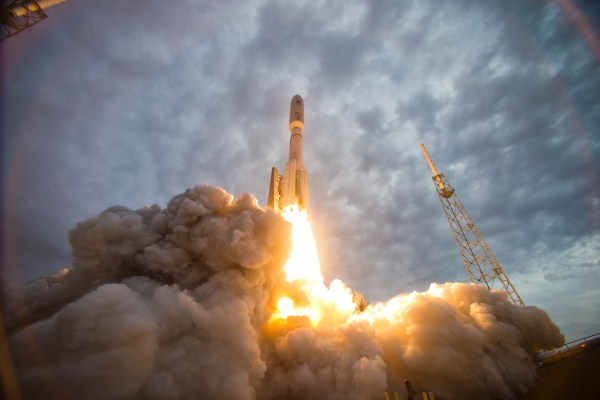As part of the escalating tensions between Russia and the U.S. (to say nothing of the rest of the world), Roscosmos has announced that the country will cease all shipments of rocket engines to the States. As the agency’s head Dmitry Rogozin put it on a state news broadcast: “Let them fly on something else, their broomsticks, I don’t know what.” Fortunately, we can do better than broomsticks.
The two affected Russian engines are reliable and powerful, having formed the main thrust for ULA Atlas V launches for 20 years, as well as Antares rockets. But as you may have observed over the last few years, Atlas and Antares launches — especially using engines from the ’90s — are very much the minority when it comes to launch volume and capability.
Being part of an industry with long timelines means being prepared for situations like this well in advance, and the U.S. has been working on reducing its reliance on Russian hardware for quite a while now. Specifically, ULA tapped Blue Origin to develop a replacement for the Russian RD-180 engines back in 2018, for the next-generation Vulcan launch vehicle.
These BE-4 engines aren’t quite ready to go (the space tourism flights BO has demonstrated have a very different launch profile), but ULA head Tory Bruno told The Verge’s Loren Grush that they’re getting there, and anyway they have enough RD-180s to get through the transition (I’ve asked the organization for comment and will update if I hear back). Northrop Grumman may be more affected, since they had Cygnus flights planned for the next few years that would have used RD-181s, also now embargoed.
More relevant than the preparedness of the U.S. legacy launch providers, however, is the proliferation of new ones. Everyone knows SpaceX, of course, and Rocket Lab is fast becoming another household name (if your household is located adjacent to the orbital service industry), but this year will likely also see the first flight of Relativity’s Terran 1 3D-printed rocket, while upstarts like Astra are trying to cut costs to a minimum with fast, frequent and simple launches.
Furthermore, the government here has fast become more comfortable with the use of these newer commercial launch providers for high-profile and sensitive missions. The time when the NRO or Pentagon wouldn’t or couldn’t put its latest spysat in orbit via a private entity is quickly coming to an end.
And just broadly speaking, the world of launch has moved beyond the era in which RD-180s were a sustainable option even if we weren’t flirting with a new Cold War with Russia. It would be an overstatement to say it’s a buggy maker refusing to sell to Ford, but there’s certainly a sense that the market was already foreclosing on last-gen Russian space tech, from launch vehicles to capsules to pads and infrastructure.
The enormous investment of private and government money in a new generation of U.S.-designed and U.S.-launched rocketry and vehicles was a practical decision on a lot of levels, even supposing the political climate did not worsen. The fruits of that investment are now becoming clear and it may very well be that, a decade hence, Russia may be looking for rides on American broomsticks.
